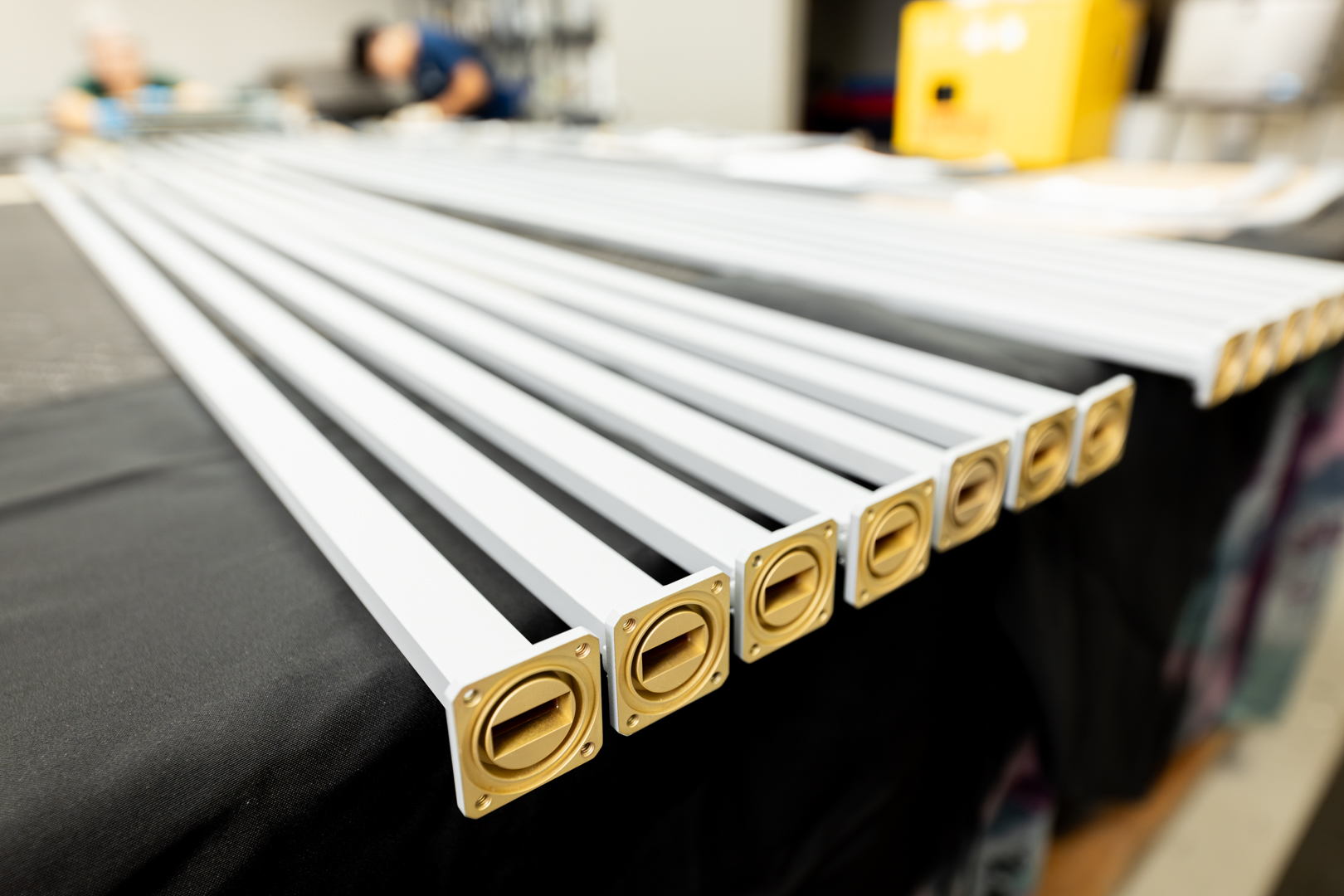The Voltage Standing Wave Ratio is a measure of how much of a signal is reflected and is a key metric for how effective a waveguide is doing its job. Ideally there would not be any signal reflected, but that is never the case. Discontinuities are the enemy of VSWR. Any mismatch between mating flanges breaks up the perfectly smooth surface. This results in a portion of the signal “bouncing back” on the protruding metal. Additionally, each bend or twist in a waveguide run will slightly increase reflection.
VSWR can be tuned to exhibit less reflection over a specific frequency. This is done by a specialized RF technician who introduces very slight deformations to the outside of a waveguide. This results in little “bumps” on the inside of the waveguide which distort the signal to cancel out the imperfections. This is similar to pressing a fret on a guitar to change the pitch.

